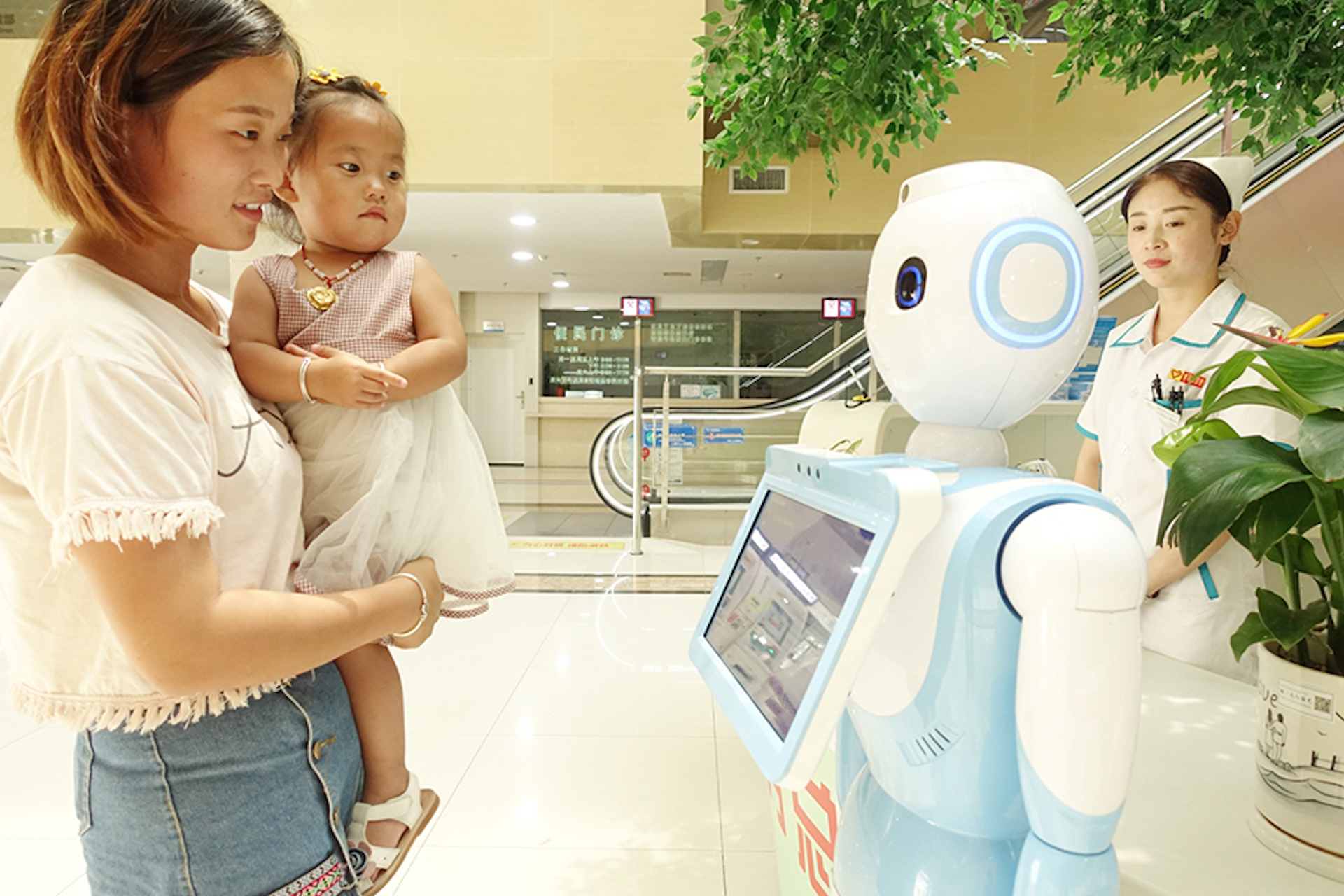Medical robots at COVID hospitals in China
As COVID rages on, robots and smart technology are increasingly being integrated into a new generation of Chinese hospitals.

Shanghai announced on April 6 that the city’s National Exhibition and Convention Center would be converted into a makeshift hospital to provide 50,000 beds, one of six such facilities in the municipality. As of today, these hospitals have seen 79,983 positive cases, 20,000 of whom were released in the last two days after returning negative test results.
Such makeshift hospitals have been fitted with a range of medical robots and smart technologies that use 5G and multi-sensor positioning for robots to deliver meals and medicines to patients, and other medical robots, including surgical robots, pharmacy automation bot systems, companion robots, and disinfection robots.
COVID is accelerating automation and the adoption of robots in the Chinese healthcare system:
- At the Renmin Hospital of Wuhan University, Wuhan Singi Interactive Intelligent Technology 武汉星际互动智能技术 has implemented a smart hospital system including triage management; 3D medical guidance; and intelligent interaction, scheduling, and inquiries.
- At the Chengdu City No. 2 People’s Hospital, the Xiaoyuan S150, a medical service robot constructed by Xiaoyuan Robot 浙江小远机器人, now moves about handling queries and providing information.
- The Beijing-based Remebot 北京柏惠维康科技 developed the first officially approved neurosurgery robot in China, and now has business in 24 provinces and regions serving hundreds of hospitals.
- Researchers from the Chinese University of Hong Kong have developed a prototype “slime robot” that will eventually be able to enter the body to perform minimally invasive surgery and deliver targeted doses of medicines.
China news, weekly.
Sign up for The China Project’s weekly newsletter, our free roundup of the most important China stories.
The context: In 2019, the National Health Commission first provided the definition of a “smart hospital” as constituting smart medical care, smart management, and smart services, and issued a series of policies to accelerate the development of smart hospitals. Since then, such new technology has started to appear with increasing frequency in Chinese hospitals, including the new series of makeshift COVID hospitals, of which there should be at least two or three per province, according to recent specifications issued by the Joint Prevention and Control Mechanism of the State Council.
The takeaway: The COVID-19 pandemic has contributed to the rapid growth of China’s medical industry from an estimated size of 41.8 trillion yuan ($6.55 trillion) in 2020 to 64.2 trillion yuan ($10.07 trillion) by 2025 with an annual compound growth rate of nearly 10%. Robots and smart technology are important components of this new generation of Chinese hospitals, which promise to be a far cry from the overcrowded and inefficient hospitals of previous years.






